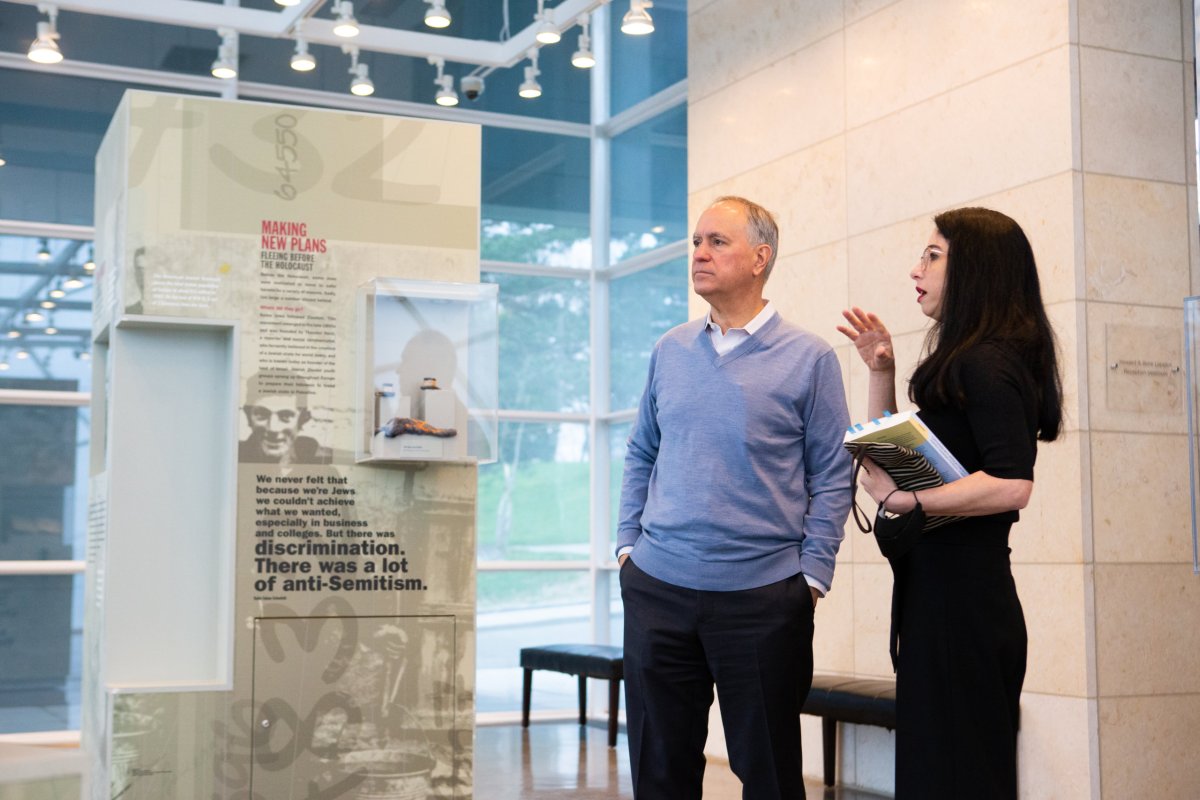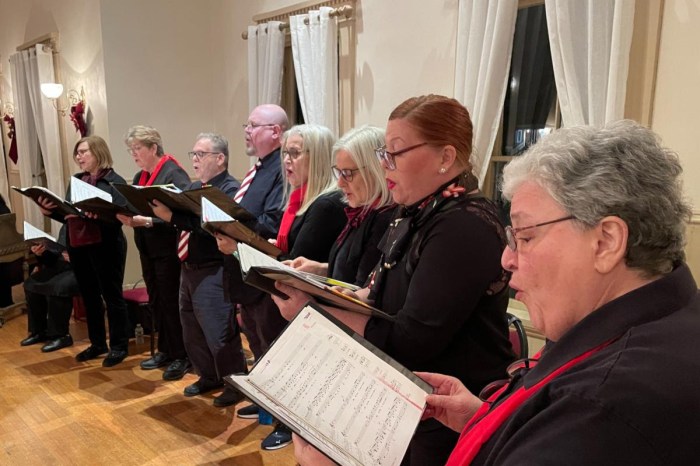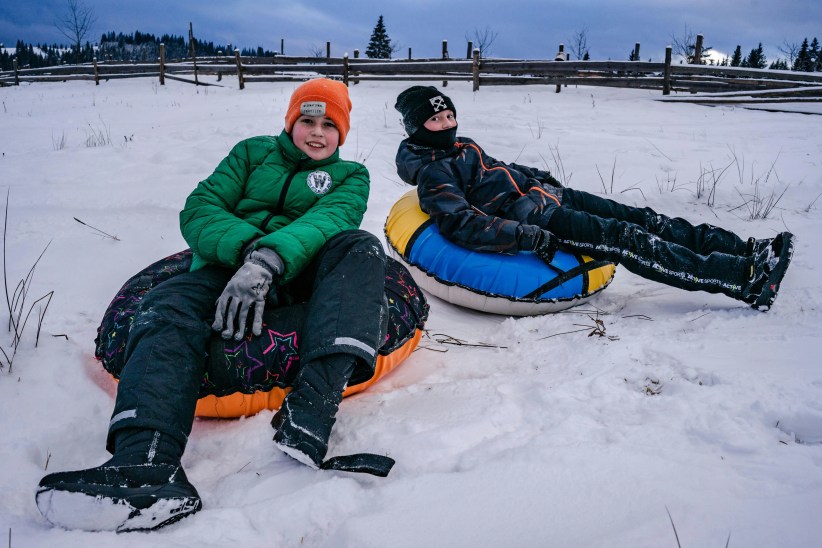CUNY Chancellor Félix V. Matos Rodríguez took a tour of Queensborough Community College’s (QCC) Harriet and Kenneth Kupferberg Holocaust Center in Bayside on Thursday, April 7.
He was accompanied by QCC President Christine Mangino; executive director of the Kupferberg Holocaust Center (KHC) Laura B. Cohen; Holocaust survivor and current chairman of the KHC advisory board Manfred Korman; Associate Director at the Kupferberg Holocaust Center Marisa Hollywood; and Dr. Cary Lane of the school’s Department of Academic Literacy, among others.
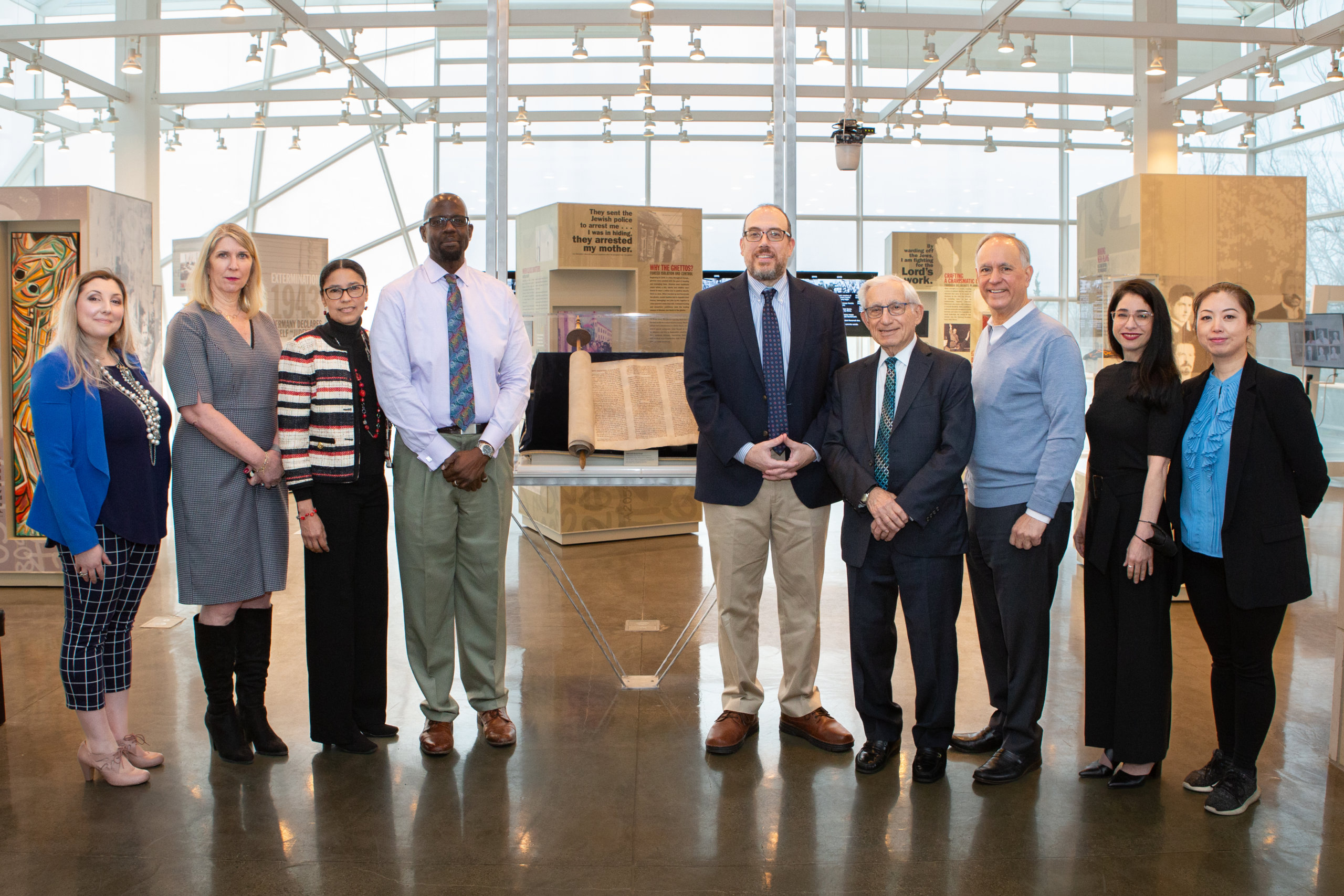
The exhibit, “The Concentration Camps: Inside the Nazi System of Incarceration and Genocide,” focuses on the complexity of the mechanism of Nazi terror and extermination and explores the broader ramifications of prejudice, racism and stereotyping. In order to better convey the physical feeling of the ghettos and concentration camps, some of the walls in the building had were made from bricks and wood. Additionally, an iron gate at the entrance of the exhibit symbolizes those found at entrances to concentration camps.
According to Cohen, many of the students prefer physical exhibits compared to reading about people, places or things related to the Holocaust online.
“You can’t just read or write about the Final Solution in one sentence,” Cohen said. Interpersonal connection has proven to be a great way to draw their attention.
According to Hollywood, a big challenge had been making the students better relate to the atrocities committed, as they happened so far away from New York City. Bringing in artifacts from the Holocaust for the exhibit and survivors to speak to the students has proven effective at drawing their interest.
“Many of these survivors were teenagers or children then,” Hollywood said. “Students can relate to that.” Recorded interviews the school had done with 13 Holocaust survivors in February 2020 are available to be viewed at the exhibit. In them, each survivor described their experience at the camps and the aftermath.
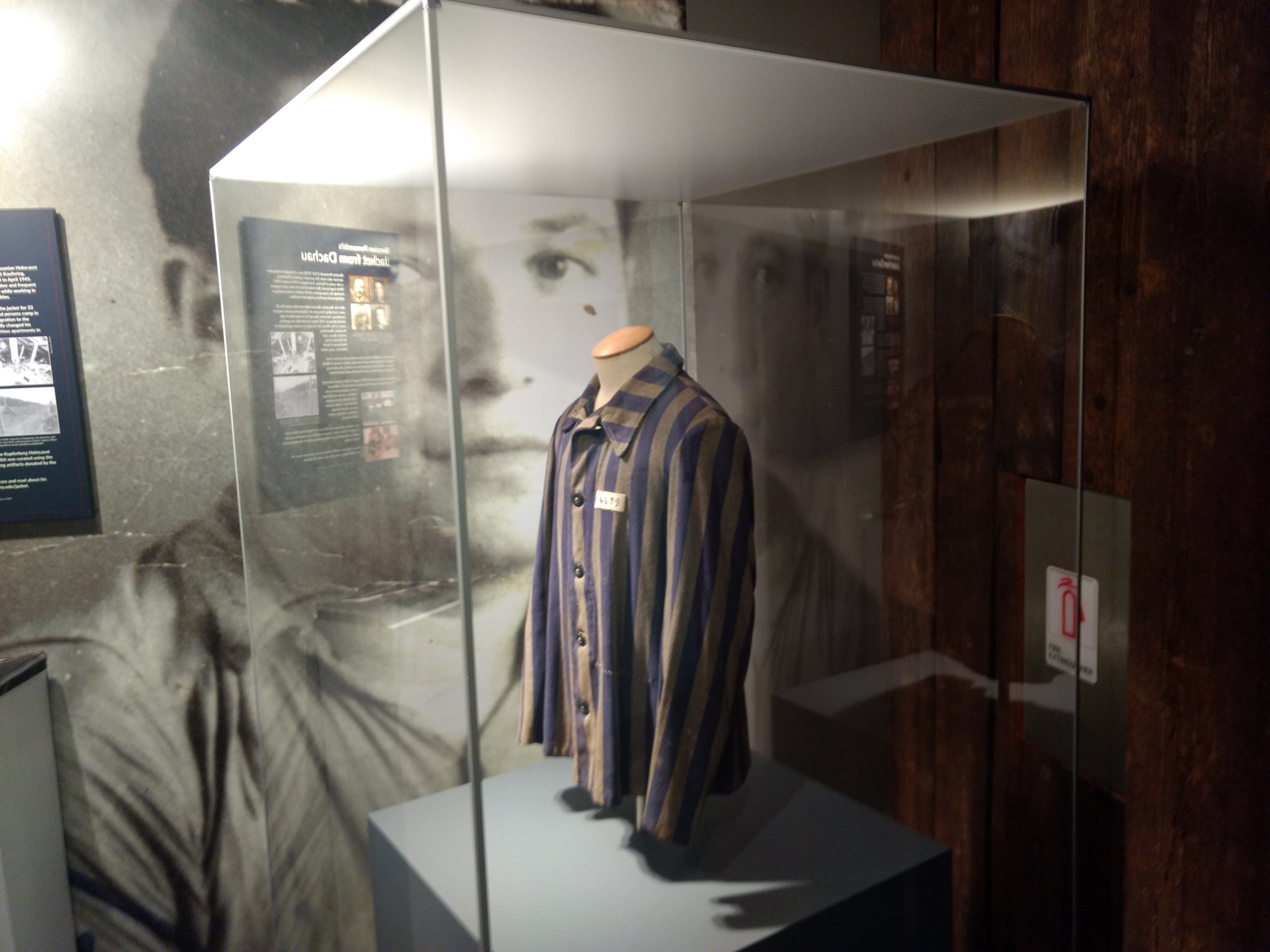
One of the most impactful items in the exhibit is a concentration camp jacket that was worn by Holocaust survivor Benzion Peresecki while at Dachau. While he and his mother both survived the Holocaust, his older brother Levi-Ichak was killed in July 1941 as one of over 300 victims via a firing squad of Lithuanian Activist Front and Nazi soldiers. He was 17.
Rodríguez said he found the exhibit very interesting.
“I’m already making plans to come back again and see everything [the exhibit] has to offer,” Rodríguez said.
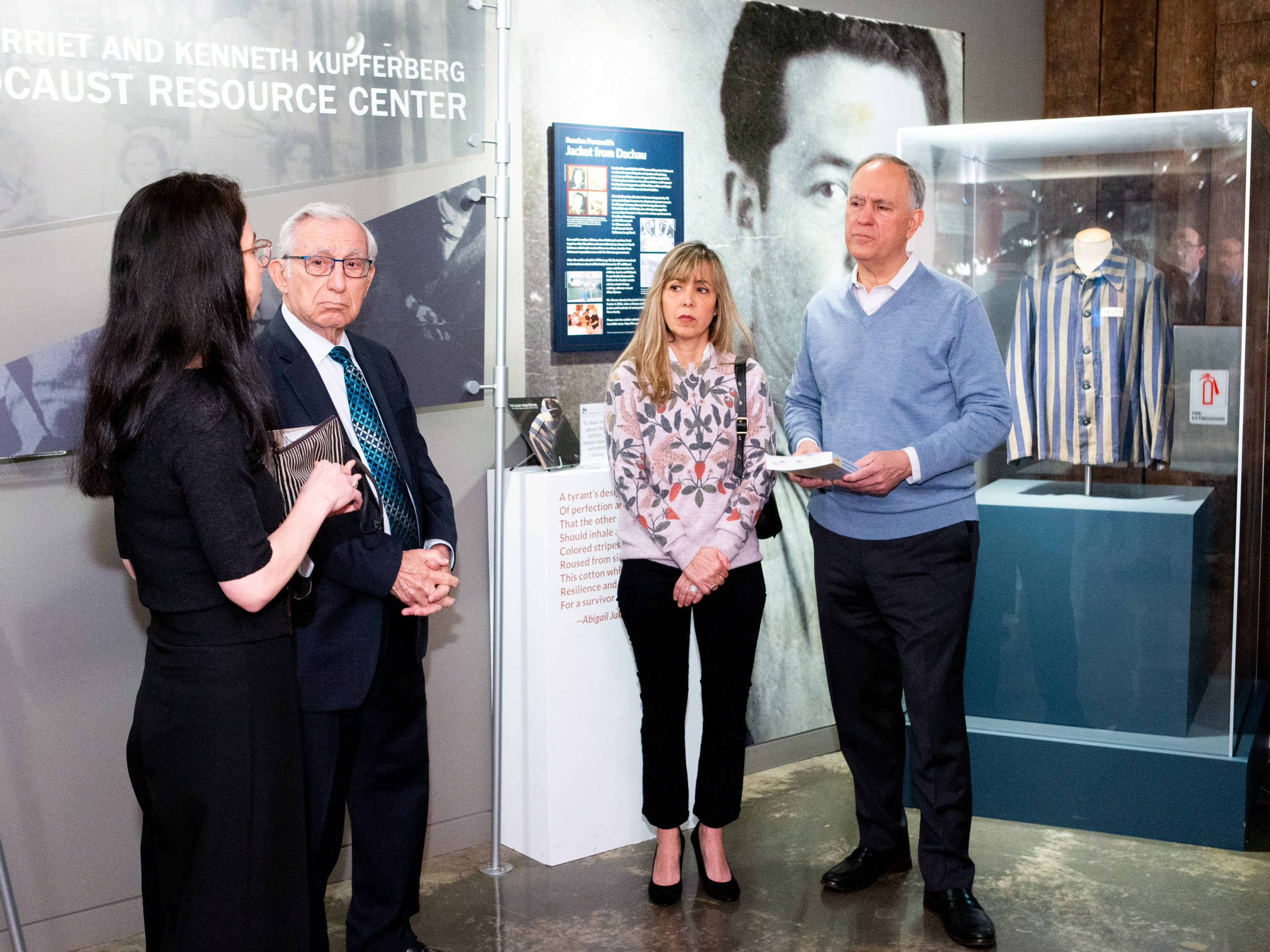
He noted that with hate crimes rising in the city, it could do a lot of good for people to see this exhibit and remember what atrocities that state of mind can cause.
“You certainly feel the sense of reflection by the end of the exhibit,” Rodríguez added. “The KHC has long been one of our city’s most effective leaders in sustaining the memory of that dark period so that today’s students and future generations understand the consequences of antisemitism as well as ethnic hatred, racism and bigotry against all groups and in all forms. This new exhibition is difficult and sobering but so important. Its relevance to today’s world, and this week’s horrors in Ukraine, is all too clear.”
With Yom Ha’Shoah — Holocaust Remembrance Day in Hebrew — set to begin the evening of April 27 and end the following evening, it’s now a very good time to visit the exhibit and remember just how much those in the concentration camps went through. It’s also worth keeping in mind that the Jewish people weren’t the only ones persecuted and killed in the camps, according to Cohen, who added that some of the other groups include Jehovah’s Witnesses, homosexuals and people with mental disabilities.
The KHC was initially opened as a research center in 1983 before being converted into one of the first research archives devoted to the Holocaust on the East Coast of the United States shortly afterward.
Today, the KHC offers approximately 20 public programs and special events for Holocaust survivors, and it hosts over 150 tours reaching over 2,000 students and community members.

